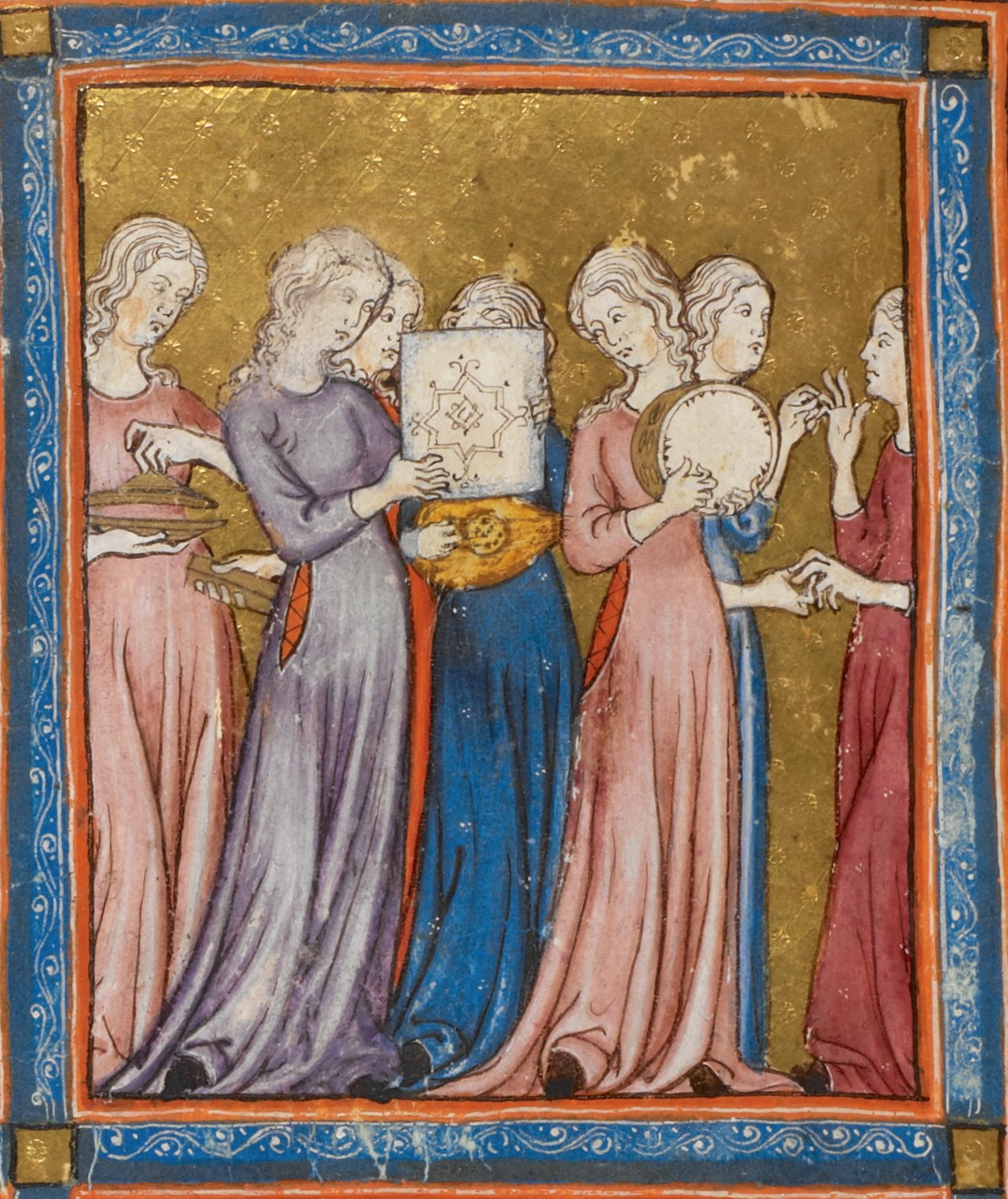
LIFE AS MYTH
![]()
JOURNAL
![]()
JOURNAL 2018
![]()
Mary & Co.
What we might be
![]()
SPRING 2006
One more scratch on the doorway
![]()
LIFEWORKS
![]()
ATLAS
![]()

SPRING 2018
A LIVING TAPESTRY

The dance of Miriam from The Golden Haggadah, artist unknown. ca 14th century. The British Library, London. This panel is an interpretation of Exodus 15:20.
Imagine a tapestry.
It contains thousands, perhaps millions, of individual threads. When the threads are woven together, something larger forms and an overall design emerges.
Now imagine that tapestry woven out of living threads, each thread having the ability to change color and shape. And as each thread changes, the tapestry responds and transforms as well, allowing a different design to be revealed.
Your life is just like a single thread in a living tapestry.
Luke 1 is the textual source for The Magnificat, attributed to the Virgin Mary and part of the annunciation tradition. The church later adapted it as a canticle to be spoken or sung in church services. This poem shares similarities with a much older text, The song of Miriam (Exodus 15), possibly the oldest extant poetry in the Old Testament and often misattributed to the prophet Moses.This poetry is part of the exodus story and was sung following the successful crossing of the Red Sea. A comparison of the two texts follows.
I will sing to the Lord,
for he is highly exalted.
Both horse and driver
he has hurled into the sea.
An excerpt from The song of Miriam, Miriam (384-22 BC), poet, prophet, Exodus 15My soul doth magnify the Lord, and my spirit hath rejoiced in God my Savior.
... He hath showed strength with his arm; he hath scattered the proud in the imagination of their hearts.
He hath put down the mighty from their seat, and hath exalted the humble and meek.
He hath filled the hungry with good things; and the rich he hath sent empty away.
An excerpt from "The song of Mary", Luke 1
